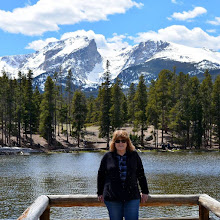Monday, December 15, 2025
The Reason for the Season
Monday, December 8, 2025
Early December Holiday Happenings!
We usually leave some leaves on our lawns in late fall, as we have seen the deer dig under the snow to eat them all winter. They are good foragers, and they survive on what they can find in the wild.
As these assorted decorations proclaim ..."It's beginning to look a lot like Christmas"...and more busy times are ahead!
Sunday, November 30, 2025
The Grateful Season
We had a bountiful Thanksgiving Day, full of feasting and family fun!
Our family consisted of fifteen people this year as our son's in-laws were all invited.
Pre-dinner appetizers were plentiful!
4 or 5 onions, quartered
2 large or 3 small carrots, peeled and cut into chunks
4 large or 5 small celery ribs, cut into chunks
2 large or 3 small garlic cloves, smashed and peeled
Sprigs of fresh thyme and sage, if available; otherwise, use a tablespoon each of dried.
3 dried bay leaves
1 teaspoon black peppercorns
Salt to taste
Add the roasted turkey carcass to a large stockpot with vegetables and herbs, and add 6 quarts of water. and place over medium-high heat just until the mixture comes to a boil.
Immediately reduce the heat to low, skim any foam floating on top, and simmer, skimming as needed, for 3 hours.
Strain stock through a sieve into a large container or containers. Discard solids. Let stock cool slightly, then refrigerate. Skim off any fat from the top of the stock when it is cooled
Monday, November 17, 2025
Fall Is My Favorite Season!
I showed the beautiful autumn colors in Rocky Mountain National Park a few posts ago—click here to read that post—but fall has been equally beautiful where I live along the Colorado Front Range. This year, we did not have our usual snowfall in October or November, so fall leaves lingered longer.
Sadly, the invasive Emerald Ash Borer has been spreading in our part of Colorado, and we hope to protect our tree from it with special treatment by a certified arborist in the spring.
A recipe for my Pumpkin Buttermilk Bundt can be found here.
Pumpkin bread is here.
Spicy Apple Nut cake is here
Roasted Butternut Squash Soup is here.
Lentil Soup With Sausage and Escarole is here.
(Sadly, escarole is not easy to find in Colorado, so I often substitute kale or spinach for it in this soup)
Sunday, November 9, 2025
Casa Bonita -- a Fun Denver Area Restaurant and Entertainment Center
Reservations are not easy to get at this very popular restaurant and entertainment center, and we felt fortunate to be able to celebrate our daughter-in-law's birthday together!
On the Casa Bonita Fun Facts page, they say:
"The Greatest Restaurant in the World!
A cultural institution in the Denver area since its opening in 1974, Casa Bonita, under new ownership, is proud to open with a refreshed look and feel, and a brand new culinary team. While maintaining the magical ability to transport guests back in time to 1970s Mexico, Casa Bonita provides an unmatched experience that includes live music, shows, games, and memories that will last a lifetime."
After dinner, one can go to Casa Bonita's theater and see a magic show!















-COLLAGE.jpg)





















































